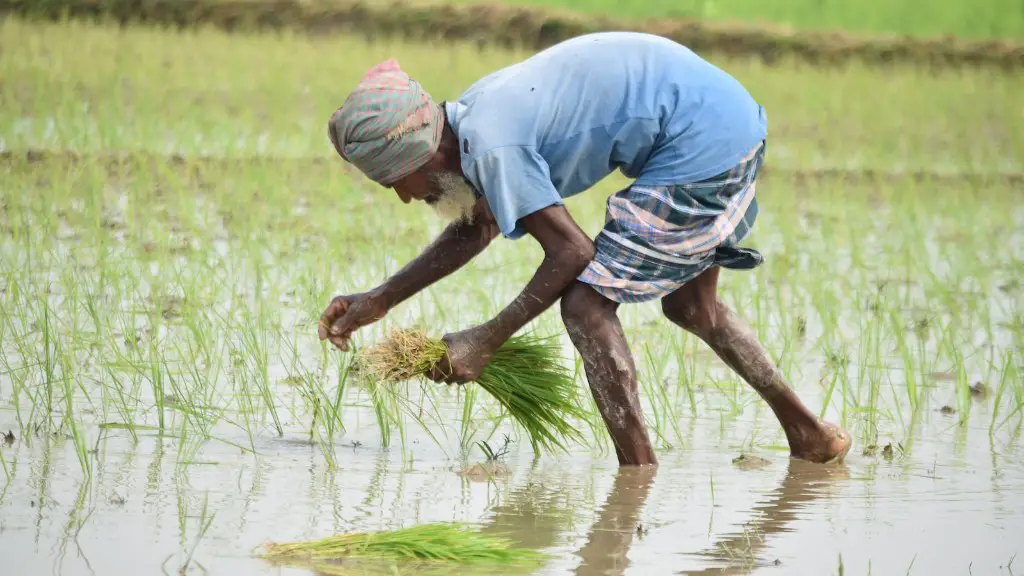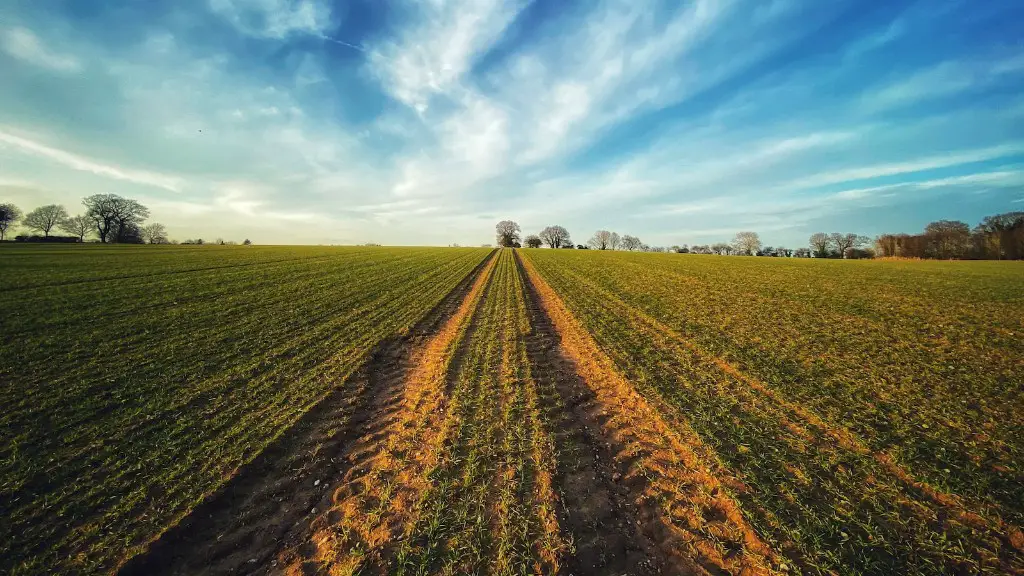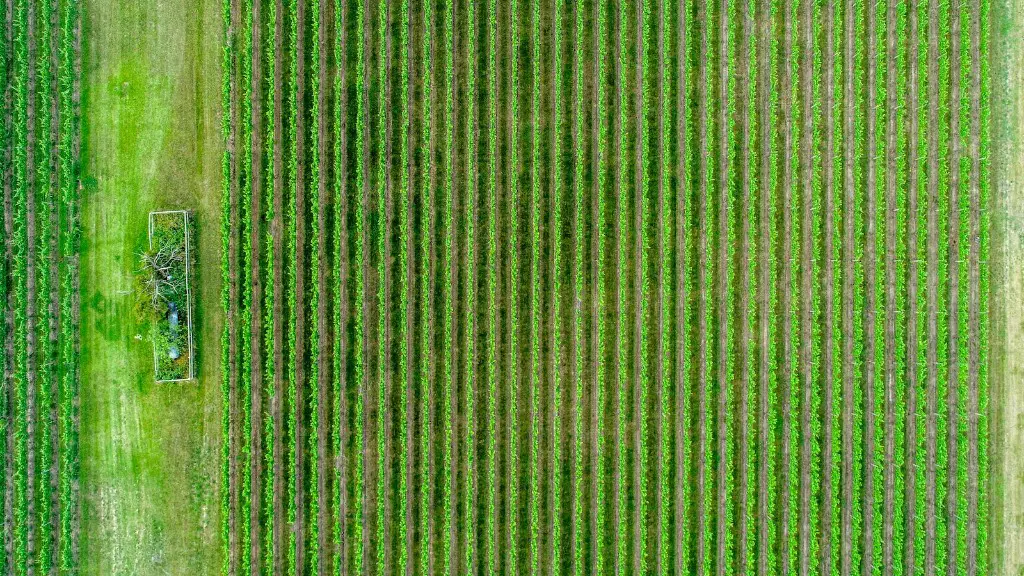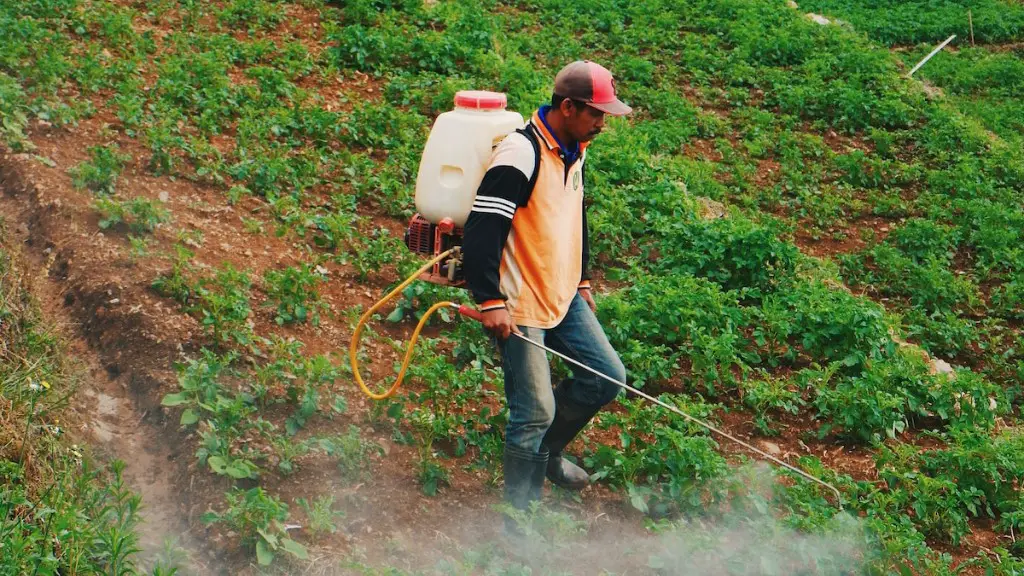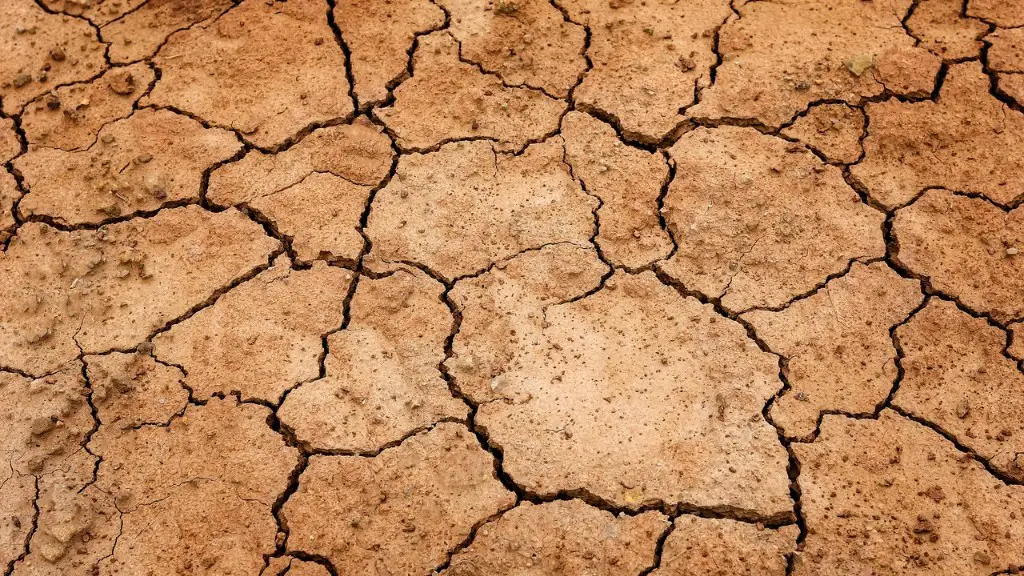Since the early 21st century, drone technology has made significant advancements, with agricultural applications becoming increasingly popular. Also known as unmanned aerial vehicles (UAVs), drones are aircrafts that are operated remotely by pilots, and they can be used for various purposes, such as surveillance, mapping, and crop dusting. Farmers and agricultural companies have begun to utilize drones to improve efficiency and yield, as well as to reduce costs.
One of the main ways that drone technology is being used in agriculture is for field mapping. Drones can be equipped with high-resolution cameras and sensors that can collect data about the crops, such as mapping the growth of plants and measuring soil moisture levels. This data can be used to create detailed maps of the fields, which can be used to optimize planting, irrigation, and fertilization.
Another popular use for drones in agriculture is crop dusting. Drones can be equipped with pesticide sprayers, and they can cover large areas of land quickly and efficiently. This can help farmers to reduce the amount of chemicals that are used, and it can also improve the accuracy of the application, which can ultimately lead to better crop yields.
Overall, drone technology is providing a new and innovative way to improve agricultural productivity. Farmers
Drone technology in agriculture refers to the use of unmanned aerial vehicles (UAVs) to facilitate agricultural processes. This can include tasks such as crop mapping, surveying, and spraying. UAVs offer a number of advantages for agricultural applications, including the ability to cover large areas quickly and the ability to collect high-quality data.
What are drones and how do they benefit agriculture?
Agricultural drones are becoming increasingly popular among farmers and other agribusiness owners as they offer a number of advantages for monitoring crops and livestock. Drones allow for a higher level of detail and accuracy when it comes to land imaging, which can be extremely helpful for identifying potential problems early on. In addition, agricultural drones can be used to help optimize field management by providing real-time data on crop and livestock conditions.
A drone is a flying robot that can be remotely controlled or fly autonomously using software-controlled flight plans in its embedded systems, that work in conjunction with onboard sensors and a global positioning system (GPS).
What kind of drones are used in agriculture
While there are many drones available today, not all of them can be utilized in agriculture. Those that are suitable for farming, fall into two categories: fixed-wing and multi-rotor drones. The cost and payload capacity of both types are similar.
Drones are increasingly being used to apply pesticides and insecticides, as they can help save up to 95% of the water that would otherwise be used for spraying. This is due to the fact that different chemicals have now been developed that require less water for dilution, especially with the emergence of drones.
What are 4 advantages of using drones on farms?
The use of drones in agriculture has numerous benefits that can help address some of the challenges faced by the industry. One of the key benefits is increased productivity. Drones can cover more ground more quickly than traditional methods, and can also target specific areas more effectively. This can lead to increased yields and improved efficiency.
Another benefit of drones is their ability to help farmers adapt to climate change. Drones can be used to monitor conditions and gather data that can help farmers make decisions about planting, irrigation, and other operations. This information can help farmers reduce the impact of climate change on their operations.
Finally, drones can also help reduce pollution. Drones can be used for precision agriculture, which can help farmers reduce the amount of chemicals and water used in their operations. This can lead to reduced runoff and leaching, and can help protect groundwater resources.
Drones are becoming increasingly popular for a variety of reasons. Here are six benefits of drones and drone technology:
1. Makes Inspections More Efficient: Drones can be used to inspect hard-to-reach areas more efficiently than traditional methods.
2. Helps Greatly With Scientific Research: Drones can be used to collect data and conduct research in a variety of fields.
3. Makes Delivery Easier: Drones can be used to deliver goods more quickly and efficiently.
4. Helps Emergency Responders Save Lives: Drones can be used to provide aid and assistance to emergency responders in difficult or dangerous situations.
5. Military Applications: Drones can be used for a variety of military applications, including surveillance, reconnaissance, and target acquisition.
6. Great For Recording Your Videos and Capturing Photos: Drones can be used to capture videos and photos from unique perspectives.
What is the main purpose of a drone?
Drones have become increasingly popular in recent years due to their many potential applications. They can be used for things like monitoring climate change, carrying out search operations after natural disasters, photography, filmmaking, and delivering goods. However, their most well-known and controversial use is by the military for reconnaissance, surveillance, and targeted attacks. This has led to some concerns about the use of drones and their potential impact on civilian populations.
Drones are unmanned aerial vehicles (UAVs) that are controlled by a remote operator. They have a variety of uses, including military, delivery, emergency rescue, agriculture, outer space, wildlife and historical conservation, medicine, and photography.
Drones have been used by the military for years, and their use has increased in recent years. They are used for surveillance and to attack targets.
Delivery drones are becoming increasingly popular, as they can deliver packages quickly and safely. Emergency rescue drones are used to find and rescue people in difficult or dangerous situations.
Drones are also used in agriculture, to help farmers with tasks such as crop mapping and irrigation. Outer space drones are used to explore and map other planets and moons.
Drones are also being used to help with wildlife and historical conservation. Drones can be used to track animals and to help prevent poachers from killing them. They can also be used to help preserve historical sites.
Drones are also being used in medicine, to help transport medical supplies to remote areas, and to provide medical assistance to people in difficult situations.
Drones are also being used for photography. They can take pictures and videos from angles that would be difficult or impossible for a
How far can Agriculture drones fly
The SenseFly eBee SQ is a fixed-wing UAV with a maximum speed of 40-110 km/h and a flight time of 55 minutes. The maximum range is up to 8 km.
Drones are becoming increasingly popular in the agricultural industry due to their ability to cover large areas of land quickly and efficiently. Farmers can use drones to identify plants affected by diseases and pests, monitor water during the irrigation process, and apply fertilisers in different areas of the farm according to the needs of the soil. This allows for a more targeted and effective approach to crop management, which can ultimately lead to higher yields and a more sustainable agricultural operation.
What is the purpose of agriculture drones?
Precise and accurate sensors on drones can help to determine water stress, low crop nutrients and soil health in fields. This information can be used to help farmers become more economically and environmentally efficient by targeting specific areas that need attention. When properly implemented, drone programs can have a positive impact on both the bottom line and the environment.
The use of agricultural drones is becoming increasingly popular in the agricultural industry. There are many pros and cons to using agricultural drones. Some of the pros include that they are more efficient and save time, they have multiple uses, and they can be used for remote mapping and agriculture. Some of the cons include that they might be complicated for some, they are expensive, and the technology changes frequently. There are also legal restrictions on using agricultural drones in some areas. Overall, the pros seem to outweigh the cons when it comes to using agricultural drones in agriculture.
Are drones the future of agriculture
Drones have the potential to revolutionize agriculture, making it more efficient and sustainable. They can be used for a variety of tasks, such as crop mapping, crop monitoring, and soil and water analysis. This information can help farmers optimize their irrigation, pesticide use, and crop yields. Additionally, drones can be used to transport water and other inputs to remote or inaccessible areas.
The future of drones in agriculture is also promising, as drones are being developed to act as mechanical pollinators and to incorporate smart applications, making drones a promising and affordable technology to address the challenge of growing food insecurity.
Drones have become increasingly popular in recent years, and their use in agriculture has been growing steadily as well. Drones offer farmers major cost savings, enhanced efficiency, and more profitability, making them a crucial tool in modern agriculture.
Drones can quickly survey vast stretches of farmland, mapping the property and reporting on crop health. This information can be used to improve spraying accuracy, identify problem areas, and make better decisions about irrigation and fertilization. drones can also be used to monitor livestock, helping farmers to keep track of their herds and identify health and safety issues.
The use of drones in agriculture is still in its early stages, but the potential benefits are clear. Drones have the potential to revolutionize the way we farm, making agriculture more efficient, more sustainable, and more profitable.
What are the disadvantages of using drones in agriculture?
The main disadvantages of agriculture drones are that they require basic knowledge and skills to operate, have shorter flight times and often have less range than manned aircraft. Drones with longer flight times and ranges are more expensive, as are those with more features.
There are a few disadvantages to using drones, or unmanned aerial vehicles (UAVs). Firstly, they can be hijacked or manipulated relatively easily, meaning that the footage or data they collect could be compromised. Secondly, they can trespass into authorized areas such as airports and military zones, which could cause serious security breaches. And finally, while convenient surveillance is an advantageous use of drones, it can become a disadvantage with severe consequences when done by third parties, as it could invade people’s privacy.
How much does drone spraying cost per acre
Most commercial drone applicators are currently charging $11-14 per acre, which is competitive with traditional aerial applications. This shows that drones can be a viable option for farmers and other commercial users.
Drones have often been seen as a recreational activity or a simple way to capture photographs and videos from a unique perspective. However, drones are quickly becoming a powerful tool that businesses can use to solve various challenges. Here are some ways businesses are already using drones to their advantage:
Aerial photography: Drones can capture images and videos from angles and heights that would otherwise be impossible or too dangerous for humans to reach. This can be useful for surveying land or inspecting buildings.
Data collection: Drones can be equipped with sensors that can collect all sorts of data, such as temperature, humidity, and air quality. This data can be used to improve Agricultural yield or monitor environmental conditions.
Improving accuracy: Drones can be used to collect data more accurately than humans. For example, they can be used to map a field more accurately than if a human was walking through it.
Workforce multiplier: Drones can be used to do tasks that would normally require a human workforce, such as inspection or delivering packages. This can save businesses time and money.
Conclusion
Drone technology in agriculture refers to the use of unmanned aerial vehicles (UAVs) to support agricultural operations such as crop monitoring, livestock grazing, and soil mapping. Drones can be equipped with various sensors and cameras to collect data that can be used to improve agricultural productivity.
Use of drone technology in agriculture is a rapidly growing phenomenon. With the help of drones, farmers can now surveil their crops, identify pests and diseases, and even deliver targeted pesticide applications, all without ever having to set foot in their field. This newfound precision not only saves farmers time and money, but it also reduces the amount of chemicals that are used, making agriculture more sustainable. As the use of drones in agriculture continues to grow, it is clear that this technology is here to stay.

